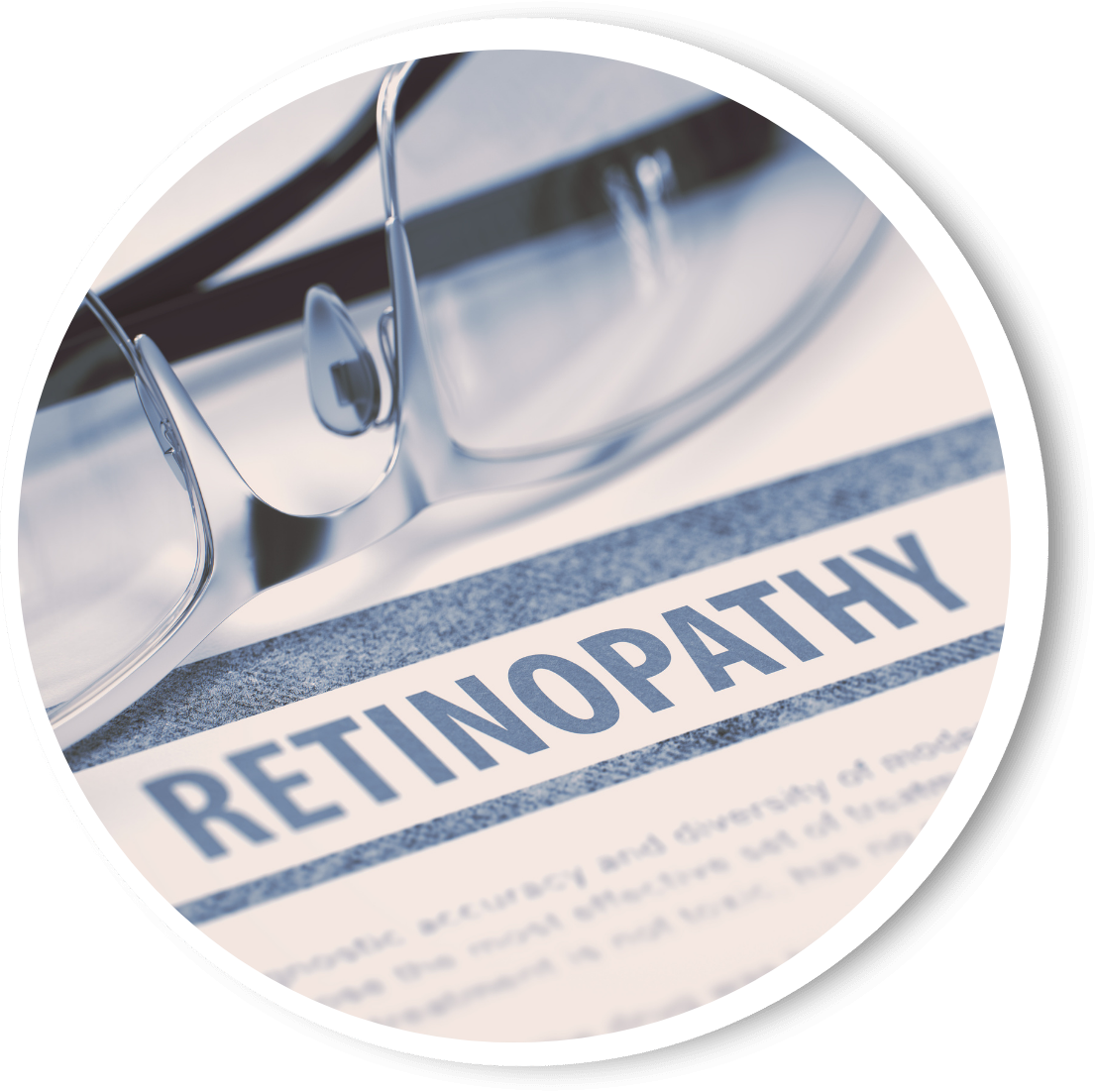Diabetic Retinopathy
What Is Diabetic Retinopathy?
Diabetic retinopathy occurs when there is damage to blood vessels in the retina. The blood vessels sustain damage over time, and this damage gradually worsens in the late stages of diabetes. Anyone with diabetes is at risk of developing diabetic retinopathy.
If you have diabetes and are experiencing problems with your vision, schedule an eye exam with your eye doctor in Northwest Florida. A doctor can diagnose the condition and recommend the appropriate treatment.

What Are the Symptoms of Diabetic Retinopathy?
You may not notice the symptoms of diabetic retinopathy initially. However, diabetic retinopathy is a progressive condition, meaning symptoms occur more frequently as the condition worsens. Common symptoms of diabetic retinopathy include
- Floaters (dark spots or strings in your vision)
- Blurriness
- Empty areas in your vision
- Vision loss
- Nearsightedness or farsightedness
- Bleeding blood vessels
What Causes Diabetic Retinopathy?
Diabetic retinopathy is caused by high blood sugar due to diabetes. Too much sugar in the blood can damage your retina—the part of your eye that detects light and sends signals to your brain through the nerve in the back of your eye known as the optic nerve.
Diabetes damages the blood vessels in the body. The damage to your eyes begins when sugar blocks the tiny blood vessels that supply your retina, causing them to leak fluid or bleed. Your eyes subsequently grow new blood vessels that do not function as well. These new blood vessels may leak or bleed.
What Are the Risk Factors of Diabetic Retinopathy?
A major risk factor for diabetic retinopathy is a long duration of diabetes. Diabetes is caused by a persistently high blood sugar level, which damages the small, thread-like blood vessels that supply the retina. The retina is a light-sensitive membrane located at the back of the eye. Other risk factors include
- Tobacco use
- Pregnancy
- High cholesterol
- High blood pressure
- High or low blood sugar
- Prolonged diabetes
How to Prevent Diabetic Retinopathy
You can reduce your risk of developing diabetic retinopathy by taking the following steps:
- Ensuring proper diabetes management
- Monitoring your blood sugar level
- Managing your blood pressure and cholesterol
- Addressing any vision issues right away
Diagnosis
Your eye doctor in Northwest Florida can diagnose diabetic retinopathy in one of two ways.
1. Optical Coherence Tomography (OCT)
Optical coherence tomography is an exam in which your doctor generates an image of your retina. The picture is made by measuring the amount of a dim red light that reflects off the retina. The doctor uses the image to identify blood vessel damage.
2. Fluorescein Angiography
During a fluorescein angiography exam, your doctor evaluates the circulation of the retina and choroid using a fluorescent dye and a specialized camera. The test helps the doctor determine whether blood is flowing properly through the blood vessels.
Treatment Options
Fortunately, treatment is available for diabetic retinopathy.
Early Diabetic Retinopathy
You may not experience symptoms of diabetic retinopathy during the early stages. Therefore, no treatment is necessary. Your doctor may schedule follow up exams to monitor your condition as it progresses and provide treatment as necessary.
Advanced Diabetic Retinopathy
Different types of treatment are available for advanced diabetic retinopathy.
- Injections
- Laser surgery
- Standard eye surgery
